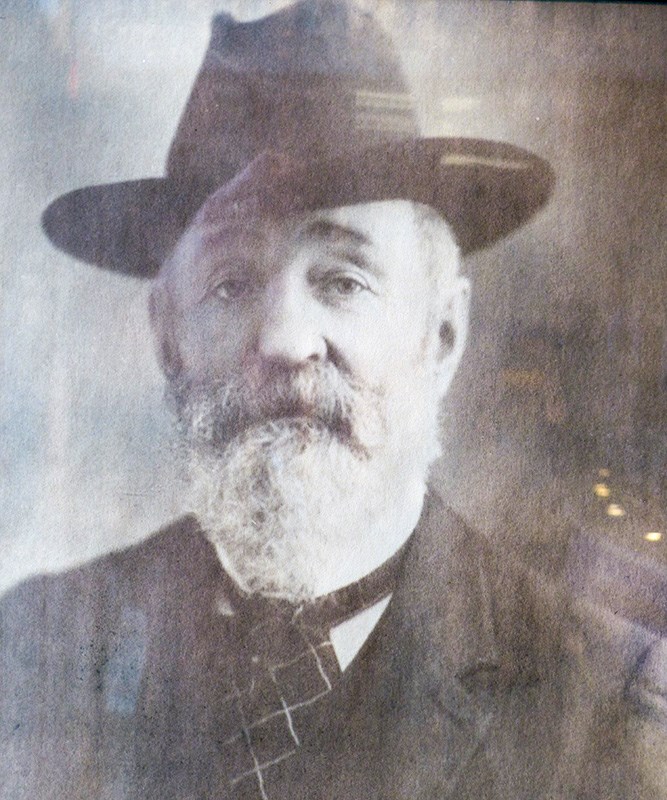Randy Evans
Special to The Journal
In the year 1891 a major controversy erupted among some of Sarnia’s leading movers and shakers over a bylaw proposed by the town’s Fire and Water Committee.
Committee member and town councillor William Weelands had vocally supported the bylaw, which proposed a 10-year contract with the Bell Telephone Co. to install an electric fire alarm system.
But on July 2, moments before council was to discuss the deal, a visibly intoxicated Weelands stunned his colleagues by announcing he’d changed his mind and would be voting “Nay.”
Bedlam broke out. Weelands and Councillor Thomas got in a physical confrontation and were separated after Thomas threatened to smash Weelands’ nose. The mayor, Ebenezer Watson, admonishing the lubricated councillor to take his seat and remove his hat.
When the heated debate came to a vote, Weelands had to be nudged to attention. He staggered to his feet, tried two or three times to address “Mr. Mayor,” and uttered words that were recorded as a “Nay.” The bylaw was defeated by a single vote.
Just days later, Weelands revealed he’d changed his vote after receiving a bribe from a grocery clerk by the name of William Kenny. Some local prominent citizens sprang into action, rounded up Kenny, and took him to the law offices of John Cowan, Esq. for questioning.
Witnesses there later swore under oath that Kenny had not only confessed to delivering the bribe, but that the payola had been provided by none other than Mr. Michael Fleming, a former city mayor and prominent Sarnia banker. When Lawyer Cowan drafted up a written confession, however, Kenny refused to sign it.
Meanwhile, the vigilantes found other witnesses who spoke of a second bribe that had been offered to Weelands by another council member, R.B. Oliver.
When they visited Weelands home, they also found an envelope containing $500 cash in the councillor’s suit vest pocket. William Kenny, former mayor Michael Fleming and R.B. Oliver were charged with criminal bribery. A preliminary hearing was set for July 9, just a week after the bylaw vote.
From the outset, the case was unusual.
For one thing, the courtroom doors were closed, locking out numerous members of the public who wanted to attend.
What’s more, despite being a potential witness to Kenny’s alleged confession, one of the Crown prosecutors was none other than the lawyer Cowan.
Even more unusual is the fact the presiding Judicial Officer was Mayor Ebenezer Watson himself. When the defense counsel objected, citing the mayor’s numerous conflicts of interest, His Worship shrugged them off.
In the first case, against Kenny, the citizens took the stand and told of Kenny’s confession at Cowan’s office. One of them was Thomas Symington, who ran a Front Street dry goods business.
Having bound Kenny over for trial, Magistrate and Mayor Watson called the case against Fleming.
That case hinged on the evidence of Kenny and Weelands. But when it came time to implicate Fleming, both men experienced a sudden case of witness box amnesia.
Fleming walked.
Similarly, the Crown’s case against Oliver disintegrated. The witnesses each confirmed that Oliver had offered Weelands $25 to vote Nay on the bylaw. But – there must have been a terrible misunderstanding – Oliver was clearly only joking. Magistrate/Mayor Watson “honourably” discharged his councillor.
Incredibly, a week later, Councillor Weelands’ wife brought further charges of bribery against the storeowner Thomas Symington. And now Cowan was the defense lawyer.
Mrs. Weelands said she’d overheard Symington offer her husband $500 and a suit of clothes to vote ‘Yea” on the bylaw. But, eventually, Symington was discharged because the wife’s evidence was uncorroborated.
By this time, Weelands had left town for Chicago, remarkably, just ahead of the outstanding warrant for his arrest for bribe-taking.
As a final postscript, the only remaining charges, against Kenny, also disappeared. When the next trial assizes were published his name was not on the docket.
Randy Evans is a local history buff who pieced this story together from original reports in the Sarnia Observer

